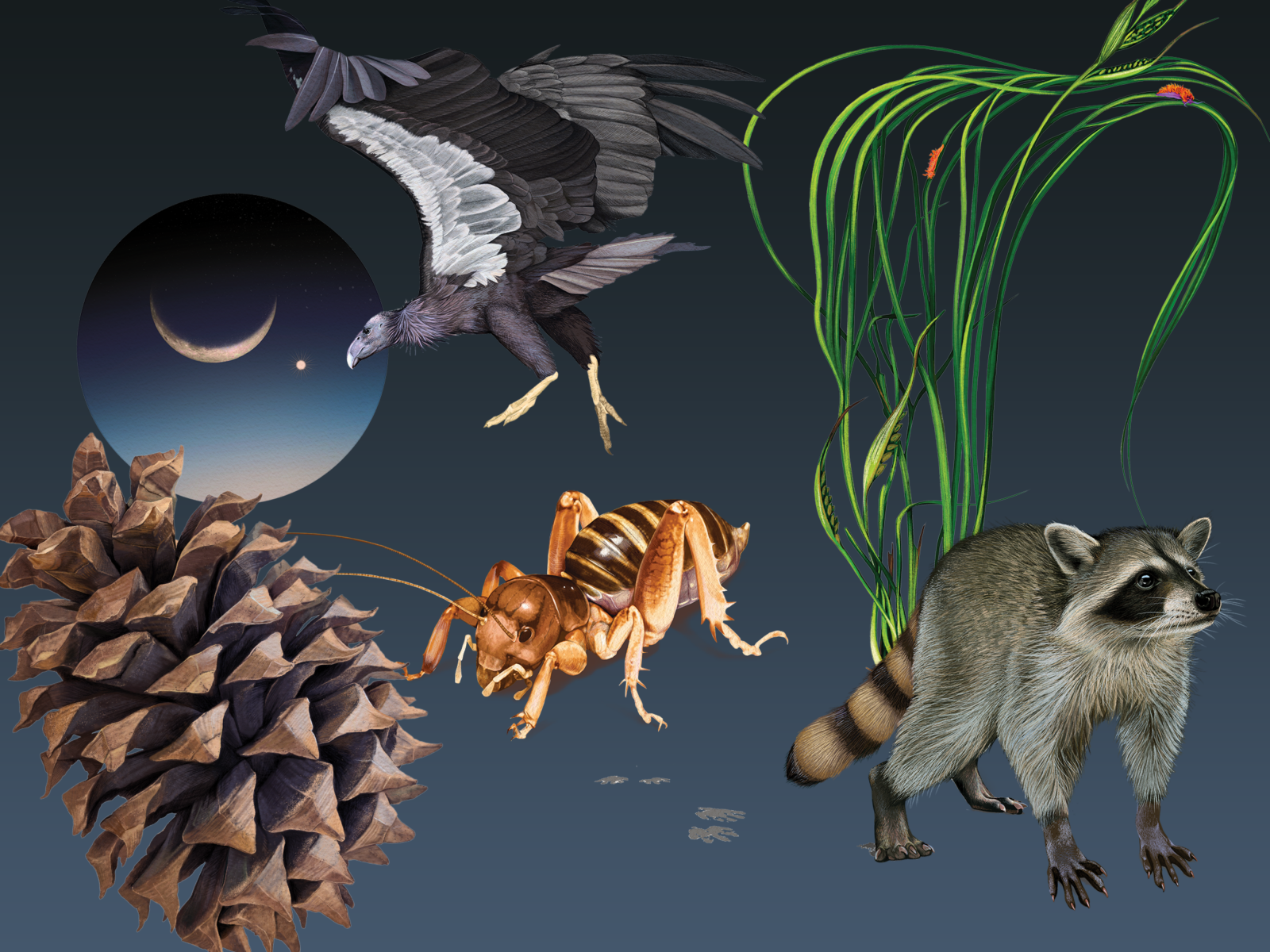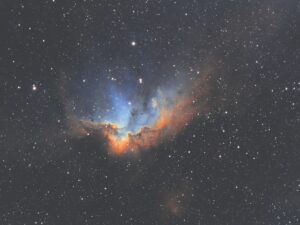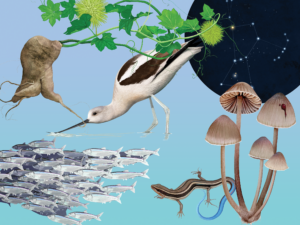Words by Bay Nature staff; illustrations by Jane Kim.

Morning star
The night sky may be the ultimate human commons: a busy place watched the world over for millennia. That’s a practice captured in ancient rock art. The first people to live on the lands of California regarded the heavens closely, drawing the sun and planets, and phases of the moon, on cave and rock walls. The earliest celestial-related art dates as far back as 10,000 BC.
Among the night sky’s gifts this fall for present-day astronomers: a glittering Venus near a crescent moon in the morning sky between 5:30 and 6 a.m. on October 10, November 9, and December 9. All season, in the evenings, Jupiter will grow brighter and climb higher in the sky. Even its four largest moons will be visible, with good binoculars in steady hands. And easy to see on an autumn night is the constellation Ursa Major, aka the Great Bear, a part of which many call the Big Dipper. To the Pomo and Wappo, whose lands lie in the northern parts of the Bay Area, it’s a long pole with a hook.
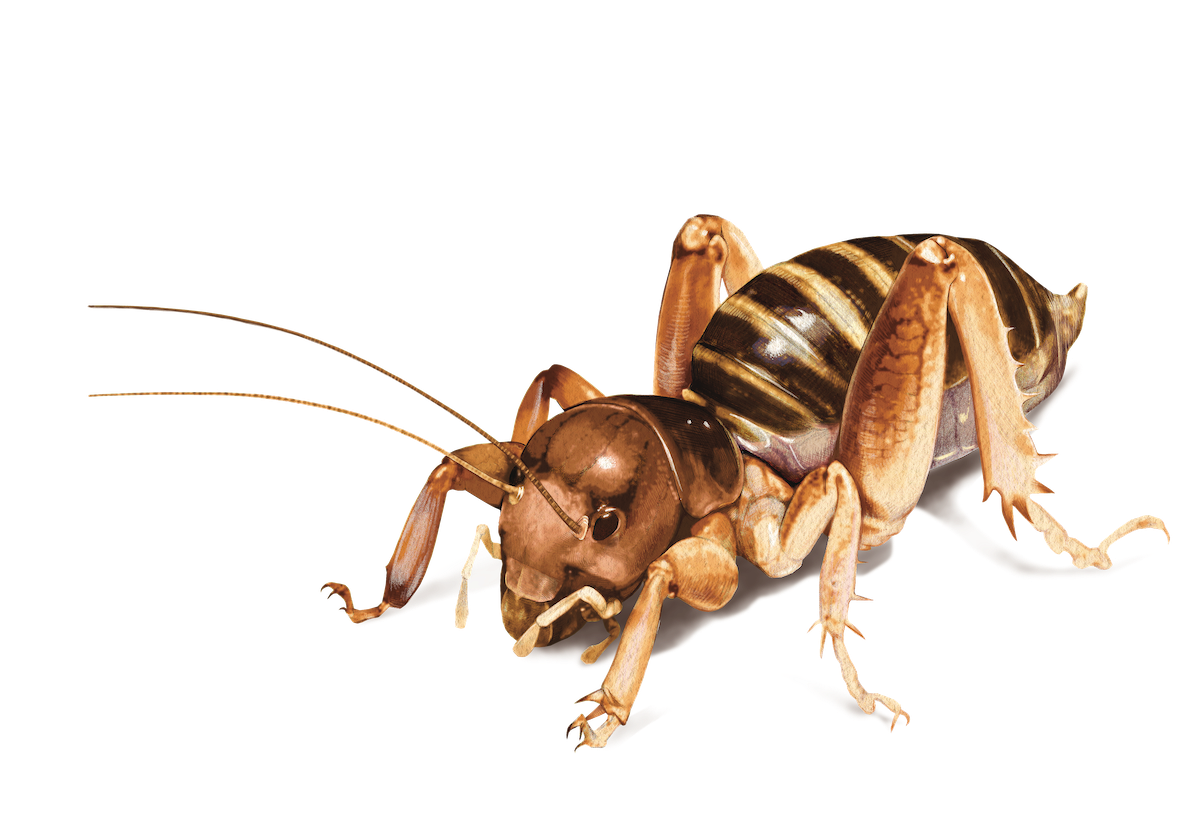
You say potato …
… and I say, “What IS that?” Up to 2.5 inches long, the potato bug, or Jerusalem cricket, molts 9 to 11 times over 19 months before reaching its chunky adulthood size, at which point it gets down to business quickly. Jerusalem crickets find each other by drumming their abdomens on the ground, a ritual that is at times audible from 65 feet away. Every species has its own “calling drum” rhythm, and the Bay Area and Central Valley species (Ammopelmatus pictus) mate between midsummer and early fall in the grasslands.
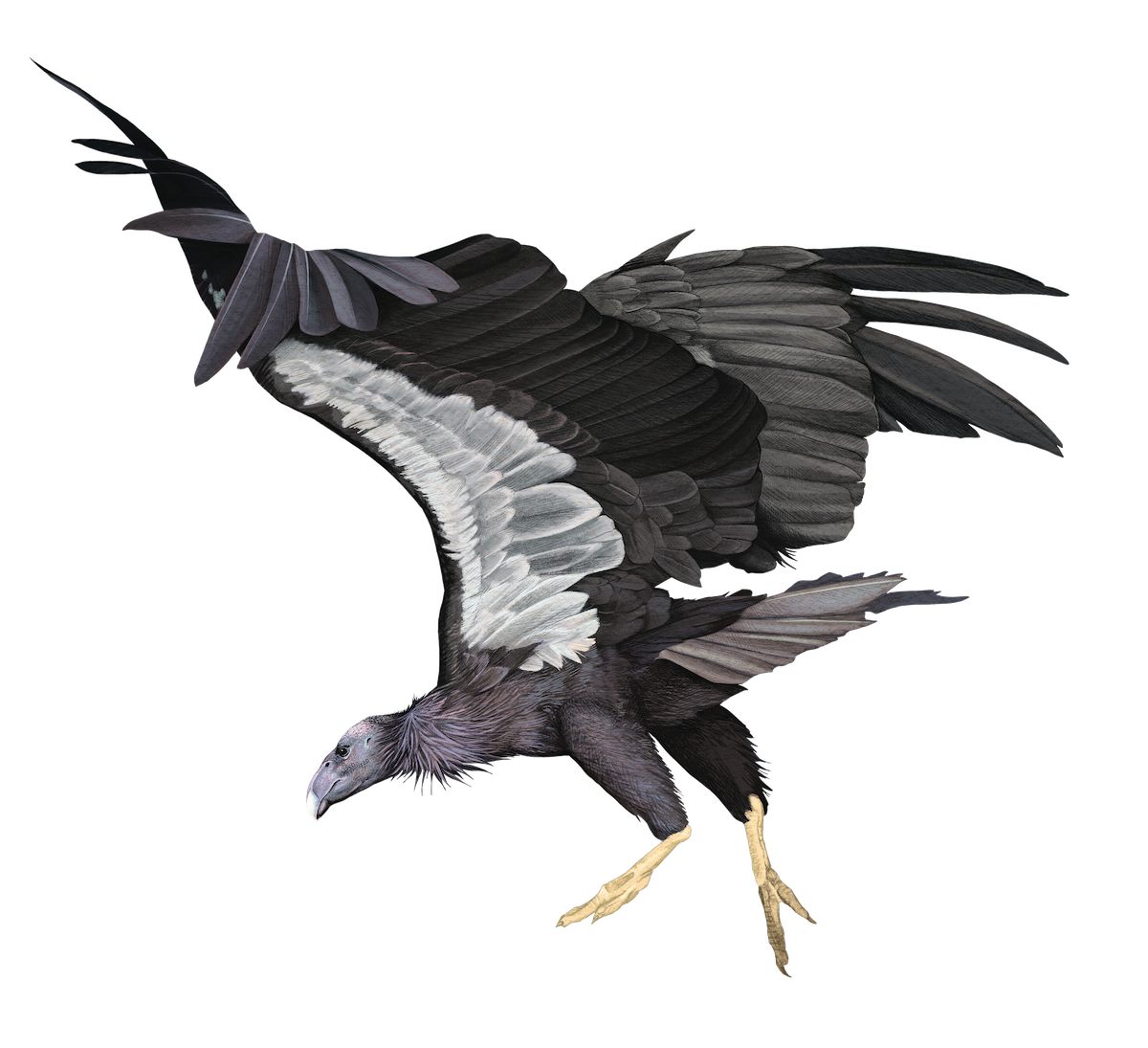
Learning to fly
When you’re the biggest bird in North America, it takes a little while to grow up. The federally endangered California condor (Gymnogyps californianus), in the wild, lays a single egg on the floor of a cave or rocky ledge that hatches in spring. But it’s not until fall that the 20-pound fledgling tries to fly from the nest. Understandably, there are a lot of crash landings in the months of practice ahead. It’ll be at least another half year before the young condor flies from the nest for good.
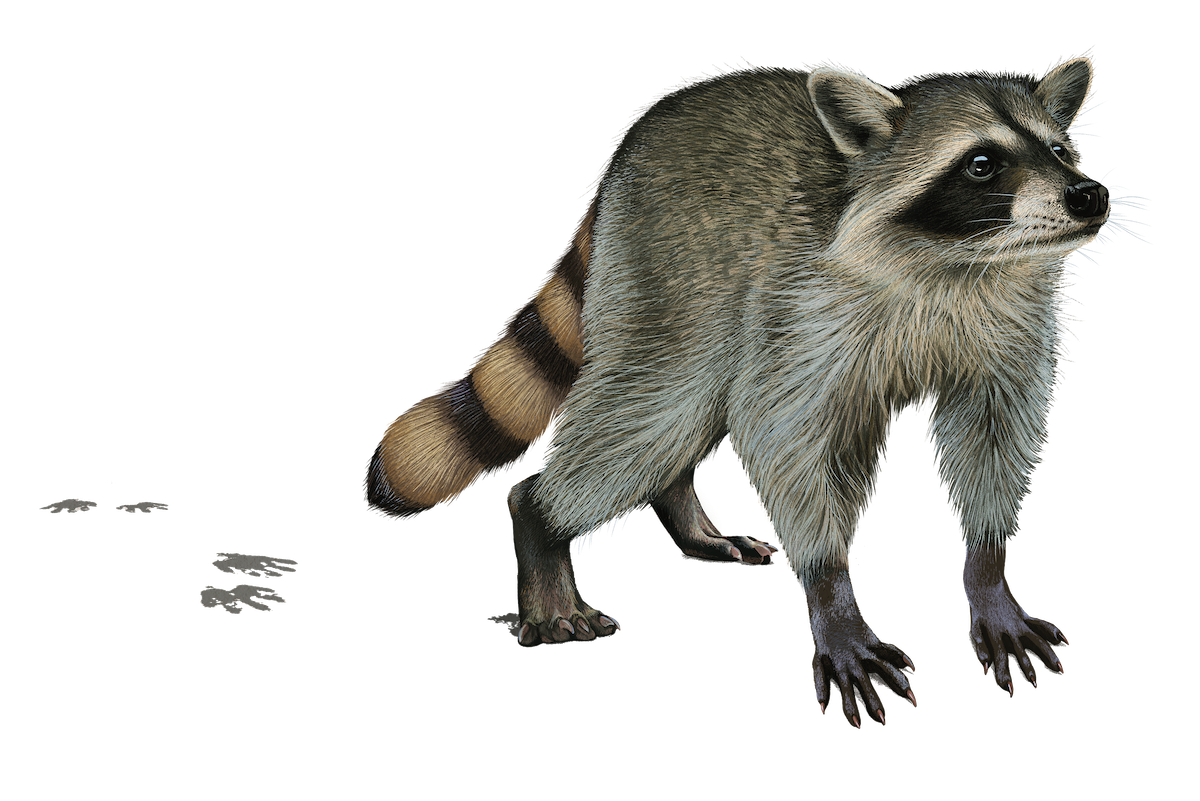
Whose hands
By the fall, raccoon (Procyon lotor) kits born in spring have grown into juveniles that sometimes like to stray from their mothers. From time to time they end up on a muddy creek bank, leaving their tracks. The front paw-tracks in particular look like tiny human handprints, as if maybe elves who specialize in waterside handstands live among us. Keep that endearing image in mind, and some love in your heart for these tricksters, when you next find raccoon prints all over the kitchen after a cold fall night.
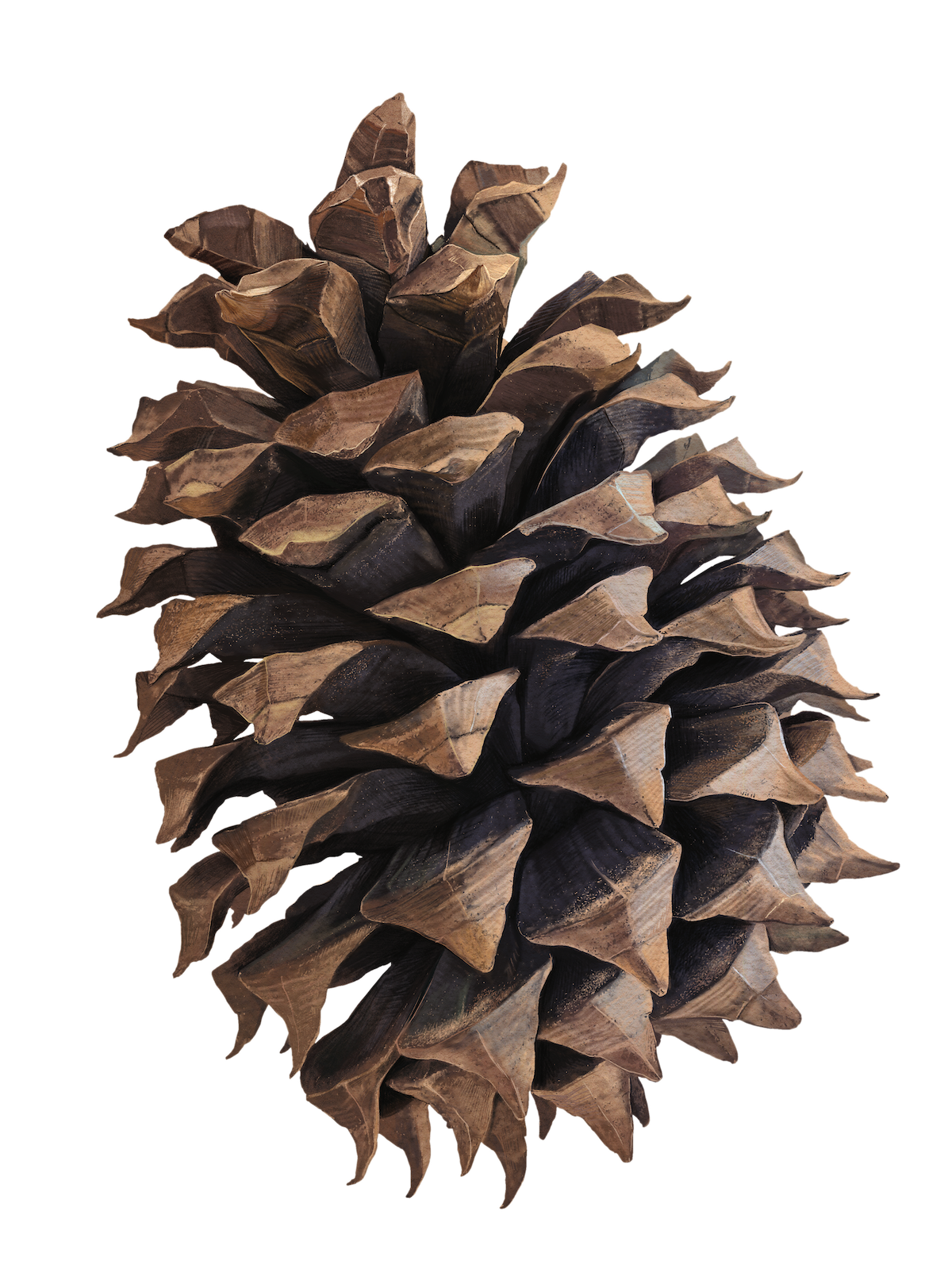
Big cones
If you’ve ever thought, “That is a ginormous pinecone,” you might well have been looking at the spiky female cone of an endemic California foothill pine (Pinus sabiniana). These cones can easily reach a foot in length and are among the biggest in the genus Pinus. Maturing by October and remaining on the tree, the cone’s woody leaves slowly open and drop ineffectually winged seeds. They don’t travel far by wind, but the tasty, very edible seeds are conveniently moved around and planted by Steller’s jays and acorn woodpeckers.

Mesmerizing grass
Tidepools have grass—long, bright-green, hairlike grass—that swishes to and fro with the tide. But as the waves in late fall grow and pound the pools harder, Scouler’s and Torrey’s surfgrasses (Phyllospadix scouleri and P. torreyi) must hold tight. Attached to rocks, their creeping roots can rip free during storms and wash ashore. Amid the green tresses are all kinds of invertebrates, like baby California spiny lobsters, and fish finding refuge from a hungry world.
Clarification: An earlier version of this article stated that Jerusalem crickets can find each other by drumming their legs or their abdomens on the ground. But they only drum their abdomens.

